- Screamer is a reboot/reimagining of Milestone’s classic 1995 arcade racer due to release in 2026
- It fuses arcade racing with fighting game mechanics featuring energy bars and KO-style takedowns
- Twin stick controls inspired by Inertial Drift: steer with the left stick, drift with the right stick
Milestone is typically associated with racing games like the MotoGP, Ride and Hot Wheels Unleashed series. But in the 1990s, when the Italian studio was known as Graffiti, Screamer was its flagship racing series.
Released in 1995, the original Screamer was an early 3D racer that brought an arcade-style experience to home computers. It was essentially the studio’s answer to Ridge Racer. “It’s a game that’s dear to our hearts because it’s one of the first games we ever made,” says Screamer’s Game Director, Federico Cardini.
Although it spawned several sequels, Screamer has been dormant since 1997 and is largely forgotten. Fast forward nearly 30 years, and the arcade racing series is making a surprise comeback.
Screamer aims to “push the boundaries of what an arcade racer can be”
While some developers have attempted to recapture the spirit of old-school arcade racers, Milestone sees its Screamer reboot as a reimagining of the genre.
“We thought, what if instead of remastering the game [Screamer], we try to reimagine it,” Cardini explains. “What if we push the boundaries of what an arcade racer can be?”
Part of this vision is Screamer’s twin-stick controls. In most arcade racers, you steer with the left stick and either brake or pull the handbrake to drift. Breaking conventions, Screamer sees you steer with the left stick and control your drift’s direction with the right stick.
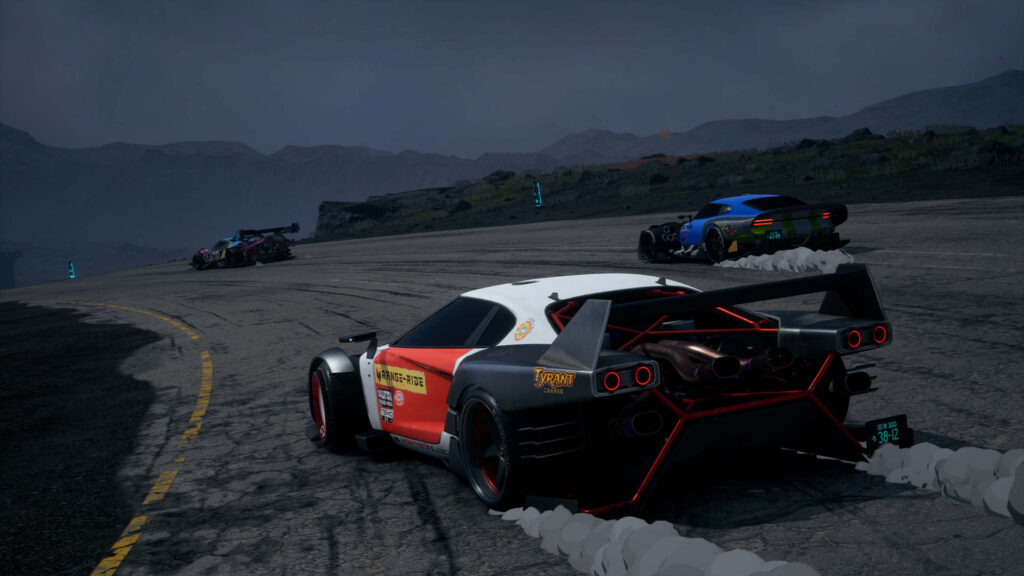
“This has massive implications,” Cardini explains. It means you no longer need to steer when initiating a drift as you approach a corner. Drifting can also be combined with braking or boosting, giving you complete control of your car’s trajectory.
Driving requires an initial learning curve, as braking too late for a corner or drifting too wide saw us slam into the nearest wall. Once you get acclimated to the controls, you soon learn to combine the two sticks to adjust the angle of your drift or move them together to navigate tighter turns.
It may sound novel, but it’s not an entirely new concept. Twin stick controls were also a core part of the sensational sideways driving game Inertial Drift, which Milestone says was an inspiration for Screamer.
Despite its obvious similarities, Milestone tells us that Screamer offers “a completely different experience.” Inertial Drift requires you to turn and drift simultaneously, whereas you can steer and slide independently in Screamer.
Fight to the finish line
Fighting games, a staple of arcades in the 1990s, were also a major inspiration for Milestone. The result is a compelling cross between Ridge Racer and Street Fighter. “We wanted to bring the exhilaration of fighting, the strategy around it, in a racing game,” Cardini explains.
As you race, two Street Fighter-style energy bars form your car’s ‘Echo System.’ Filling it up with ‘Sync’ or ‘Entropy’, the two resources that power the Echo System, unlocks special abilities.
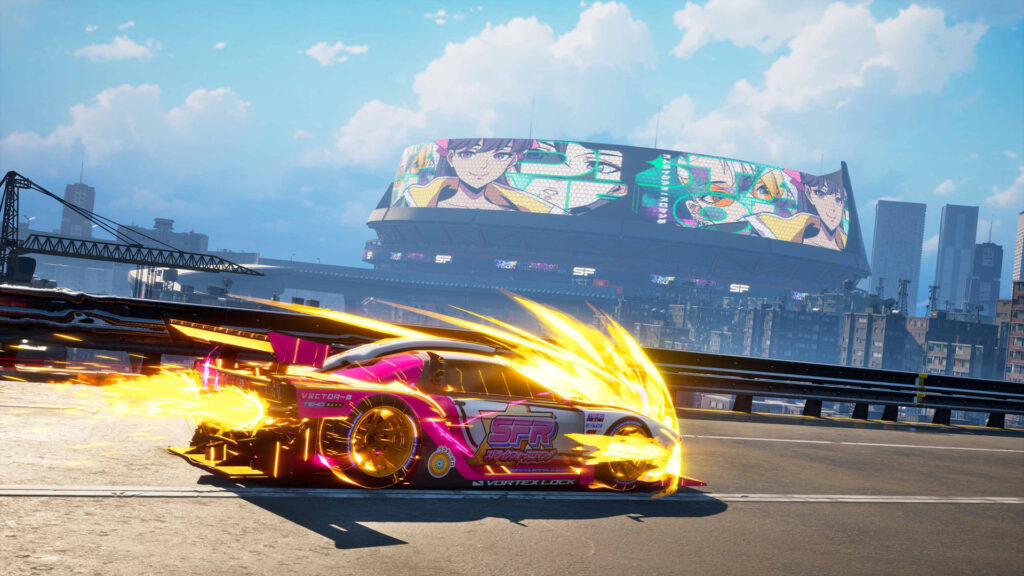
While every car has a semi-automatic transmission, shifting up a gear at the optimum revs by tapping the left shoulder button fills up the bar. Filling up one bar activates a speed boost, which is more powerful if performed at the right time.
Meanwhile, the Entropy meter on the right side of the screen activates the fighting mechanics. Filling up three bars allows you to trigger a Strike with the right shoulder button – Screamer’s equivalent of a violent K.O. in a fighting game.
With Strike activated, hitting an opponent causes them to explode instantly. This presents a risk vs reward scenario, however, because you will also explode if you miss an opponent and hit a wall while using Strike.
Attacks from opponents attempting to strike you can be blocked by activating a shield, unlocked in the first bar of the Entropy meter. It’s all designed to reward dedicated players who master the mechanics.
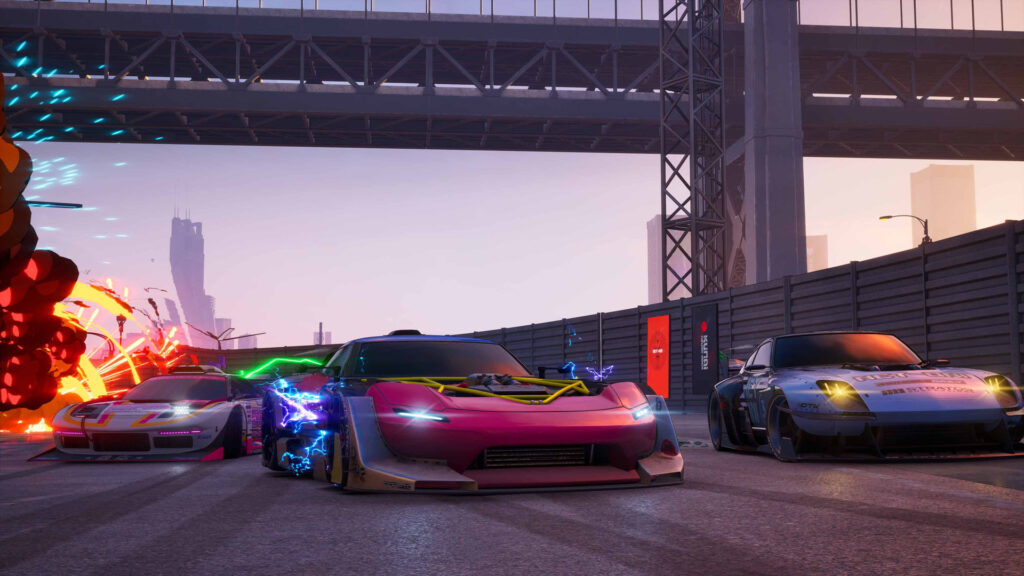
There’s a lot more depth than your average arcade racer here, though having to monitor the two energy bars sometimes distracted us from the racing. Screamer’s multiple systems are overwhelming at first, suggesting a steep learning curve for new players.
However, Milestone assures that the mechanics will be introduced gradually in the final game, alongside tutorials guiding new players.
“People are misled about what arcade meant,” says Cardini. “Arcade doesn’t mean easy. It means accessible. This game is not easy – there’s a lot of depth.”
Another similarity with fighting games is that you select a character rather than a car. Each character has a specific vehicle assigned to a team with unique visual styles.
Art attack
Everything is contextualised in a narrative featuring distinct characters, racing teams and an anime-inspired art style. Story details are being kept under wraps for now, but Milestone says it will be integral to the experience.
Anime TV shows like Akira and Arcane heavily inspired Screamer’s art direction. “Anime allows us to break the rules a lot more than reality,” says Cardini, who adds that this direction “gives a lot of freedom.”
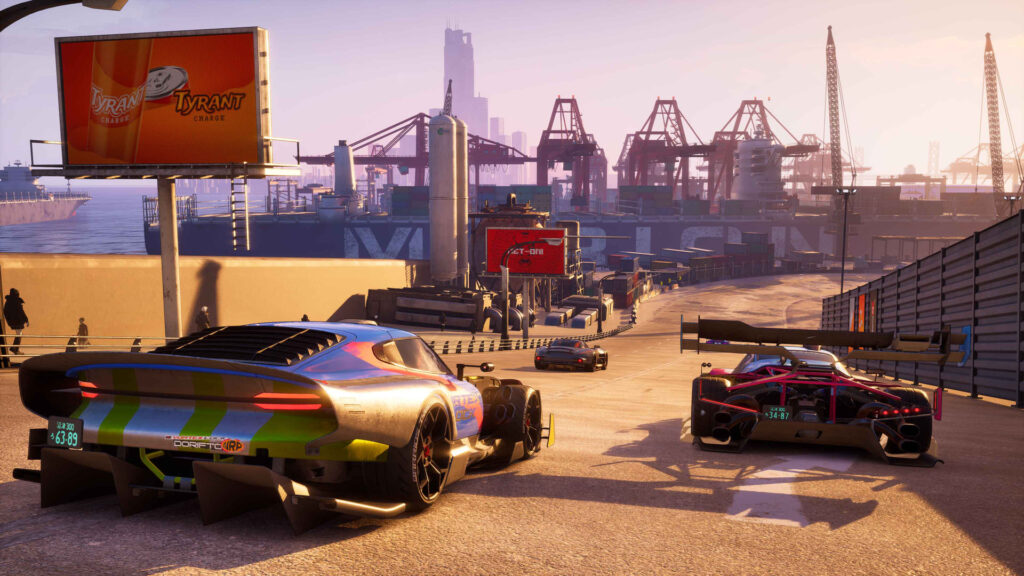
Despite the anime inspiration, Screamer’s presentation isn’t fully cel-shaded. Instead, it takes cues from Need for Speed Unbound, blending realistic-looking environments with comic book-style cars, fire and smoke effects. Reminiscent of Ridge Racer, locations ranged from docks to neon-soaked streets.
Graphically, the pre-alpha build shown at Gamescom has improved leaps and bounds since the last gameplay reveal video, with impressive lighting effects and car reflections.
“When you look at Akira, their environments are actually pretty realistic,” Cardini tells Traxion when discussing the art direction. “That’s why we decided to exploit our expertise with Unreal Engine.”
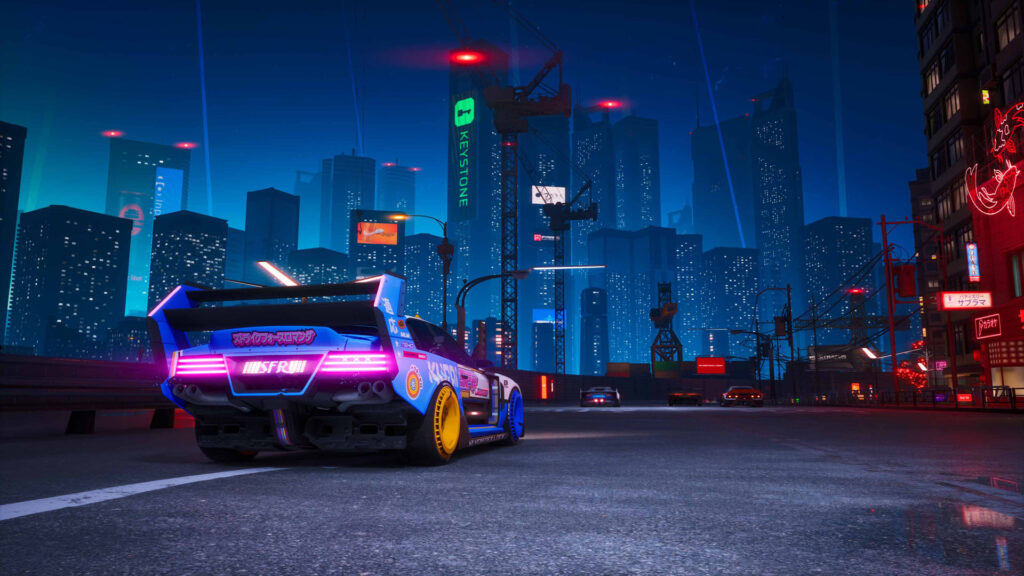
Subtle black outlines around objects add to the anime inspiration. “That’s very hard to notice unless you’re looking for it, and it adds a lot of pop,” says Cardini. “Then we have our visual effects, which lean more into the 2D style compared to how they were rendered in Need for Speed.
“Our main inspiration was actually Arcane. We’ve looked at how they did the visual effects in that series. And I think you can see that in our original teaser trailer.”
From our hands-on preview, we were pleasantly surprised by Screamer. With its narrative focus, stylish visuals and deceptively deep racing and fighting mechanics, it has the potential to reinvigorate arcade racing.
Screamer doesn’t have a release date yet, but Milestone’s new arcade racer is speeding onto PC, PlayStation 5 and Xbox Series X|S in 2026.
Shop sim racing equipment
[adinserter name=”Fanatec”]
[adinserter name=”Elgato”]
[adinserter name=”Sim-Lab”]
[adinserter name=”GT Omega”]





Chat with the Community
Sign Up To CommentIt's completely Free